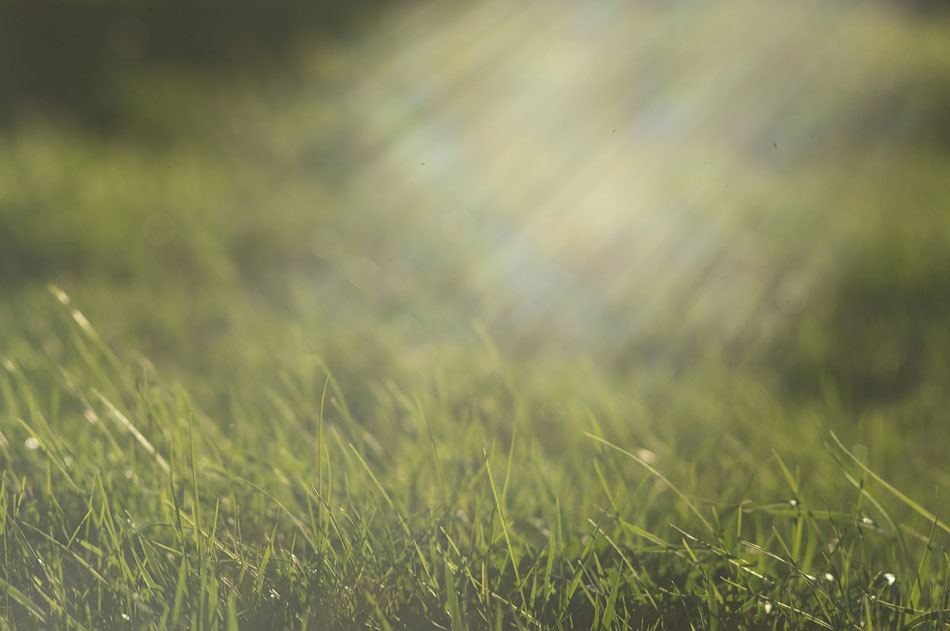Grass Types: Which one is right for your lawn?

Types of grass used for American lawns depends on the region in which you live, and can even be unique based upon the part of the state and climate in that area. In the interest of brevity and not bogging you down with the many varieties of grass species, we’ve used the simplified categories of warm season, cool season and the transition area. Discover which type of grass is native to your state and area at Scott's.
This classification splits the country into a northern region, known as the cool season, a band of area across the middle of the country, known as the transition zone, and the southern region, known as the warm season. The distinction between each type of grass has little to do with the season in which they grow and thrive, since the primary growing season for each type of grass is from late spring to early fall. Rather, it refers more to the ideal temperature range at which the grass thrives.
The Three Regions of the US
Warm Season — Warm season grass grows best when the temperatures range from 80 to 95 degrees. This grass is typically found in the humid zones of the gulf coast and the arid desert of the southwest. Grass species that thrive in the humid weather include Bahiagrass, St. Augustine and Zoysia. Bermudagrass is typically found in the arid regions of Texas and the southwest because of its resiliency in tough drought conditions.
Warm season grass in most cases becomes dormant and loses its lush appearance when soil temperatures drop below 65 degrees. Because of this, it is recommended that homeowners use cool season grass for overseeding during the winter months to protect the vibrant green color in their yard all year long.
Cool Season — These grass types typically do well in the humid and cooler parts of the Northeast, Midwest and Pacific Northwest. These grass species include Rye, Bluegrass, Fescue and Wheatgrass, which grow best in temperatures sitting between 65 to 75 degrees. Most cool season grass types don’t go dormant, but can be affected by “rust” which is a result of excessive snow cover. Cool season grasses are generally planted in mixtures of species in order to withstand heavy foot traffic, shade and extreme weather conditions.
Transition Zone — There is a band of states ranging from Virginia across to parts of southern California known as the transition zone where the optimal weather conditions for either type of grass aren’t prevalent. Typically outdoor experts tend to use cool season grass in this area of the country or a mixture of the two, but recent biological advancements have seen new types of warm season grass like Geo Zoysia and Latitude 36 Bermuda which have become more cold tolerant.
A Few More Things to Consider
Seasonality — The time of the year plays a big role in what your grass and yard need to grow. The grass should be kept longer in the summer and you need to add the right fertilizer and nutrients to your grass in the fall to ensure that it’s able to survive the harsh winter. There’s a 12-month calendar for your lawn that should be carefully considered if you want the best looking yard in the neighborhood all year long.
Water Regulations — Keep yourself up to date on the water regulations in your region. In the south and in California where it is common to have water restrictions during the summer drought, that will affect when and how you’re able to water your grass. Educate yourself on this schedule, not only to be in compliance with local regulations, but also because you don’t want to miss your window and risk your grass dying before you get another chance to pull out the sprinkler.
Pests — The types of pests, ranging from little bugs to local wildlife, will vary from region-to-region. Do your homework on the living things crawling through your grass and decide whether they can potentially harm your lawn, and what it takes to prevent the damage. These creatures and animals can be destructive to your yard if not dealt with properly.
Test Your Soil — For the really advanced lawn care aficionados, it is helpful to test your soil to make sure it’s getting the proper nutrients. This can be achieved by using a commercial test probe, the red cabbage method, vinegar and baking soda or by altering the pH level and tracking the changes. These methods can all be found online.
Next Chapter: Lawn Care Industry Statistics